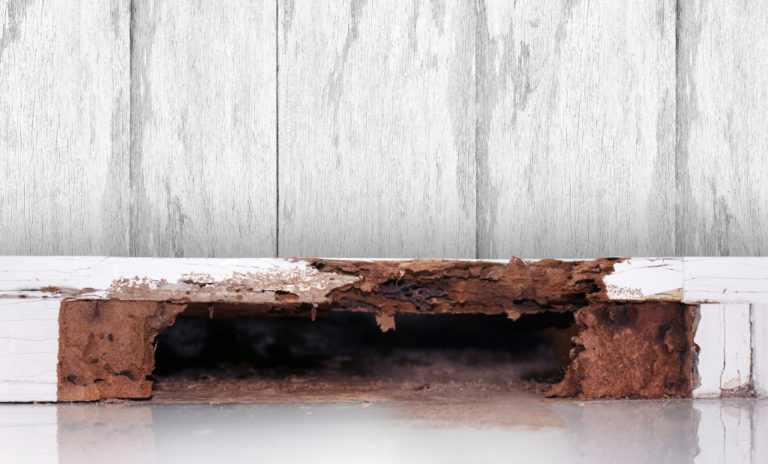Like any other item at home, properly caring for and maintaining the furniture will help it last longer. Wooden furniture can last for decades, but it is the easiest to damage. Most of the furniture at home is partially or entirely made of wood.
Perhaps it’s the table, chair, or bookshelves that means dearly to you. Whatever that item is, you want to keep it in pristine condition as much as possible. How it is damaged can identify the cause of the problem.
Here are some signs of damage and its causes:
Cracks and Holes
When holes and cracks appear in the furniture, the most probable reason is pest infestation such as termite, woodworm, and many other kinds of pests that inhabit or feed on wood. Make sure to accurately determine what pest is harming your furniture so that you can buy the right pesticide. For example, mud tubes are a clear indicator of a termite infestation. Once you spot them, look for the most effective termite treatment that can instantly stop the infestation in its tracks.
Mold
Mold and mildew thrive on moist and damp surfaces. They appear when the wooden furniture is exposed to liquid or moisture. Usually, mildew would look dry, either gray or white, flat, and sometimes powdery, while molds would appear in different colors blue, green, black, or red.
When your home has high moisture, it becomes more habitable for mold that affects the home’s wooden furniture and other wooden parts.
Swollen Wood Furniture
Wood usually exposed to water or fed by pests for more extended periods may look swollen, changing its shape. When this happens, the first thing you may think about is to salvage the item, but if it’s beyond repair, it’s always much better that you replace than fix it. This way, you don’t have to go through the hassles of fixing an item only to find it crumbles later.
Weak Wood
Items that aren’t so solid may quickly weaken when it’s substantially impacted. Another reason is that pests are eating on it underneath, which is why it’s disintegrating. It’s best to fumigate the item if it’s salvageable and discard it when it’s beyond repair.
Other Reasons for Furniture Damage

Aside from water, moisture, or pests, accidents can be a huge cause of damage. While cleaning the floor, chairs can fall off tables, stacking tables and chairs when they’re not supposed to, being spilled with acidic liquids like wine, or generally rough handling.
Given its ultraviolet rays, direct sunlight exposure can damage the furniture regardless of what material it is made of. It then discolors, changes the integrity, and damages the look of the furniture. The best you can do is move the items away from direct sunlight or cover them with a window fill that can resist the UV rays.
Extreme temperatures, whether cold or hot, can significantly affect furniture, too, which may cause it to be brittle, crack, or weak. This is why you should not leave it lying in the attic for winter or summer. Consider using a dehumidifier too when your home develops moisture all the time.
Lastly, your intention may be good but overcleaning your furniture may do more damage than good. You may tend to brush or wipe the item excessively. Even worse, the cleaning products you use may be too abrasive or high in chemicals.
Tips for Proper Furniture Cleaning
Take proper care of your furniture, and it’ll last for a longer time than you expect. Plus, you’ll no longer need to have it repaired more often. Here are some tips to keep in mind:
-
Clean using non-ammonia or non-abrasive products, polish, then dust
All you need to clean your furniture would be just water, soap, and a washcloth. Cleanse the item with mild dish soap and water, then rinse it with a clean damp cloth. Finally, dry the item’s surface by wiping it with a dry washcloth. Make sure to avoid cleaners with ammonia—they can damage any wooden furniture.
After cleaning it, make sure that you polish the furniture to further protect and revive its surface and shine. To avoid damaging the finishes of the wood, use polishing products with less alcohol. Dust the furniture every time.
-
Protect the surfaces in every way
When putting on glasses, use cork bottoms or coasters with felt to avoid water rings. Use a natural fiber table cloth, trivet, or oven mitt to prevent hot dishes and plates from directly touching the furniture.
Keep them away from direct sunlight exposure too. And as much as possible, don’t place coffee makers on the wooden cabinets since steam can also damage. Also, be aware that pets are culprits of furniture damage. To prevent them from accidentally damaging or scratching the furniture, cover wooden surfaces with protective pads.
Final Thoughts
When you just take proper care of your furniture, it will last longer. Be sure to condition your home and clean your furniture with its protection in mind.
